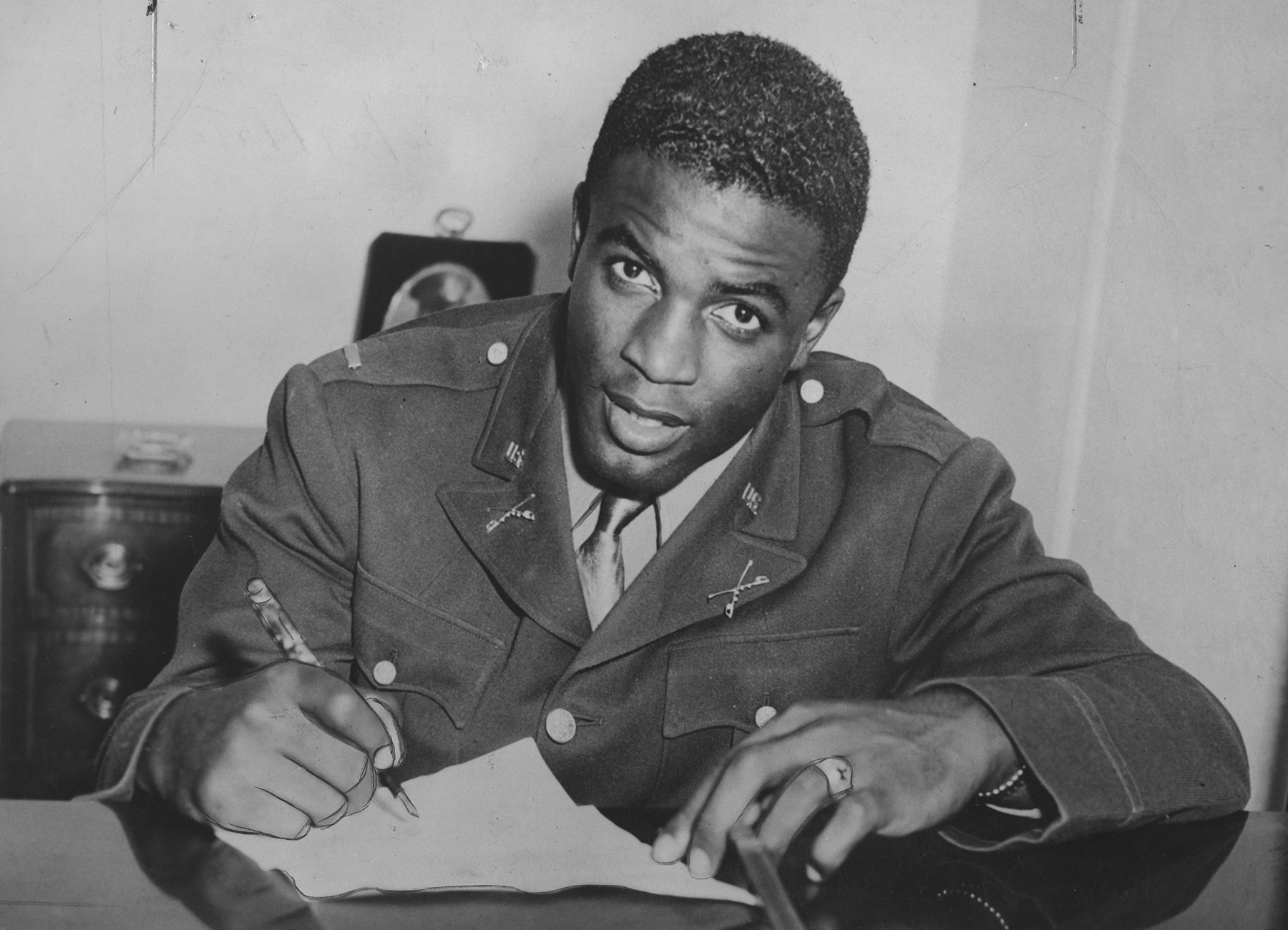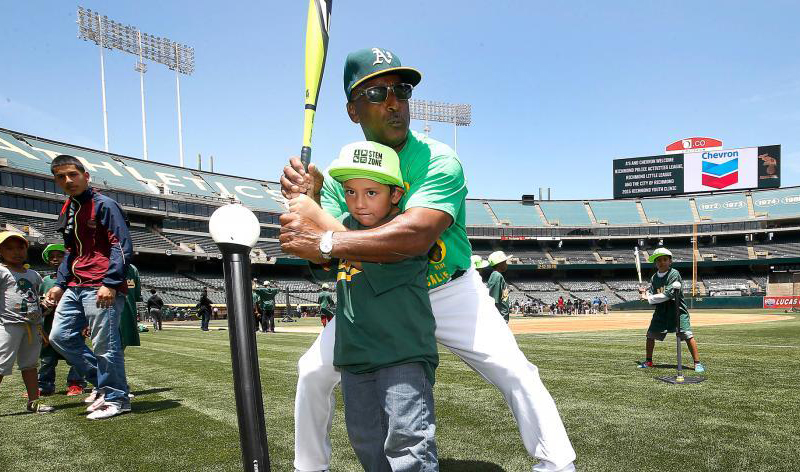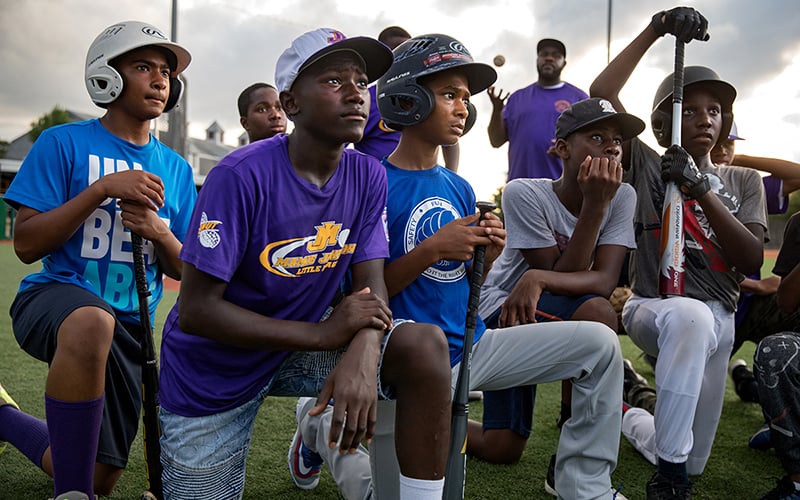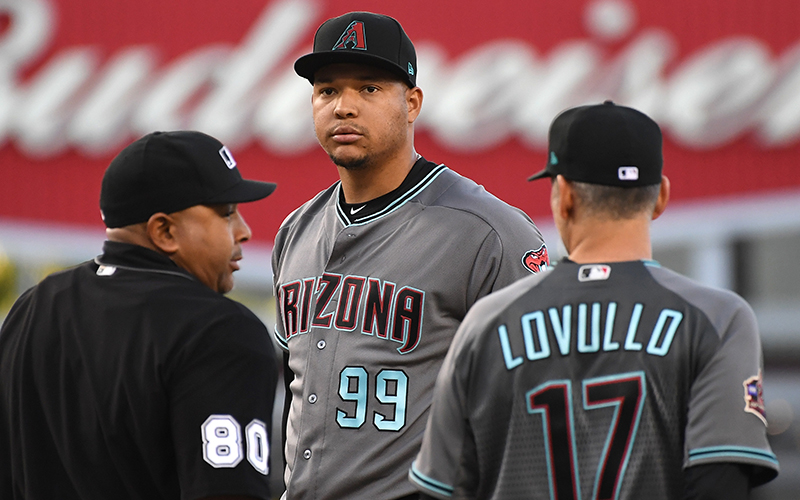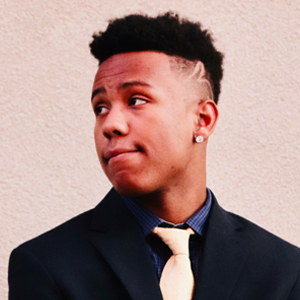In Arizona, poverty rates were higher in 2019 for the category “Black or African Americans” (20.3%) than they were for white residents (13.2), according to the Census Bureau.
Richardson believes another factor is that baseball is more of a skill sport rather than one where athleticism can cover up deficiencies in fundamentals, as is the case in basketball and football.
“You can be the fastest guy, the guy with the highest vertical jump, the strongest arm, but (baseball is) still kind of a skill game,” Richardson said. “To be successful at baseball, it takes a lot of time, a lot of repetitions and unfortunately, today in the United States, you need to have some money to get those repetitions.”
Billy Wilson, a Tolleson High School alumnus who plays in the Cleveland Indians minor league system, said his team and the Indians organization as a whole is more diverse than most in professional baseball.
“With the Indians, I feel like we have a very large amount (of diversity) compared to other teams of Black players,” said Wilson, who is Black. “And we’re all pretty close, so it’s kind of cool. I think that’s something Indians probably feel like we’re pretty good (about in the) organization. They look out for that kind of stuff and try to harp on having a big blend of players. The majority group is the Latin, Dominican, Venezuelan and Cuban players in the minor leagues. Everybody else is sprinkled in here and there.”
Wilson also believes financial factors are a big reason why other organizations struggle to bring in African American players.
“Just looking based on statistics, socioeconomic status (for) African Americans (is) a little different than other groups in America,” Wilson said. “Of course, you’re not going to see many African Americans play baseball, and they probably aren’t going to have the resources to be good. With baseball being such a mentally draining sport, you’re not (going to be) really good early on, (so) you’re just going to hate it more and more. (At that point), why would you want to continue to pursue it?”
Former Oakland Athletics second baseman Shooty Babitt has noticed a demographic change in baseball since his final appearance in the MLB in 1981.
“Probably in about the last 10 years that I was playing is when you start to see the decline of African Americans in baseball,” said Babitt, who is Black. “We were at an all-time high at 20% when I grew up playing.”
Baseball has struggled to quicken the tempo of the game and make it more interesting. Changes include decreasing the time between pitches, but they haven’t been significant. Babitt said baseball’s lack of action also contributes to the reluctance of Black kids to play.
“It used to be a fun game,” he said. “It wasn’t so analytically driven. It wasn’t smart people that were playing. It’s a bunch of robots in the game now.”
Babitt said it is critical for baseball to greater promote African American MLB players to increase interest among young African American athletes.
“People that look like me don’t see themselves on the baseball field anymore,” Babitt said. “So why would they want to play?”
Despite the lack of African American players, baseball continues to grow in diversity. It is becoming more of an international sport, as the percentage of white players has actually declined from 70.3% in 1989 to 63.7% in 2016, according to SABR. This is due to an increase of Latino players in the sport. The number of Latinos has more than doubled since that time, increasing to 27.4% from 13.2%. The number of Asian players is expected to increase as well, as the percentage has increased to more than 2% in 2016.
Wilson said cultural differences in Latin America are the biggest reason many MLB players emerge from that region.
“In those countries, you are raised to be a baseball player or you’re raised to do something else,” Wilson said. “Their escape is baseball, so obviously, they get really good at it.
“They have whole facilities designated to just baseball training out there. You don’t even go to school, (and) you just grind in baseball. (In the U.S.), you got options. As you’re getting beat up in baseball, you can just … quit and go do something else that you’re better at, is cheaper, and all your friends are doing.”
Sandra Day O’Connor High School baseball coach Jeff Baumgartner added to the narrative of the increasing number of Latin America players in the big leagues.
“Being in the Dominican, I’ve seen those players in the grind that they go through and not having anything to fall back on,” he said. “If they don’t make it to the (major leagues), there’s nothing really else for them to fall back on. That’s really what drives them and keeps them determined, and that’s definitely something that’s pushed the Dominican players.”
Successful African Americans players might be the answer to attracting young players to the game, Baumgartner said.
“(There’s) Jo Adell, there’s some young guys coming up that I think are going to be pretty good,” he said. “(There’s) Riley Greene with the Reds, so there’s some guys coming up that hopefully will pop in and be big-time sensations that can generate the next (African American) youth movement.”
Phoenix East Valley Little League coach Demeitris Wauqua has noticed a low number of African American baseball players on his teams as well as back when he played Little League.
Wauqua noted that many African American baseball players play football or basketball as well. When it comes to choosing one sport, he said, athletes tend to shift away from baseball because of the NCAA’s baseball scholarship system.
“Colleges (only) provide a partial scholarship for baseball,” Wauqua said. “With football, they’re able to get a full ride. Possibly (football or basketball) is an easier route for (African American) athletes.”
